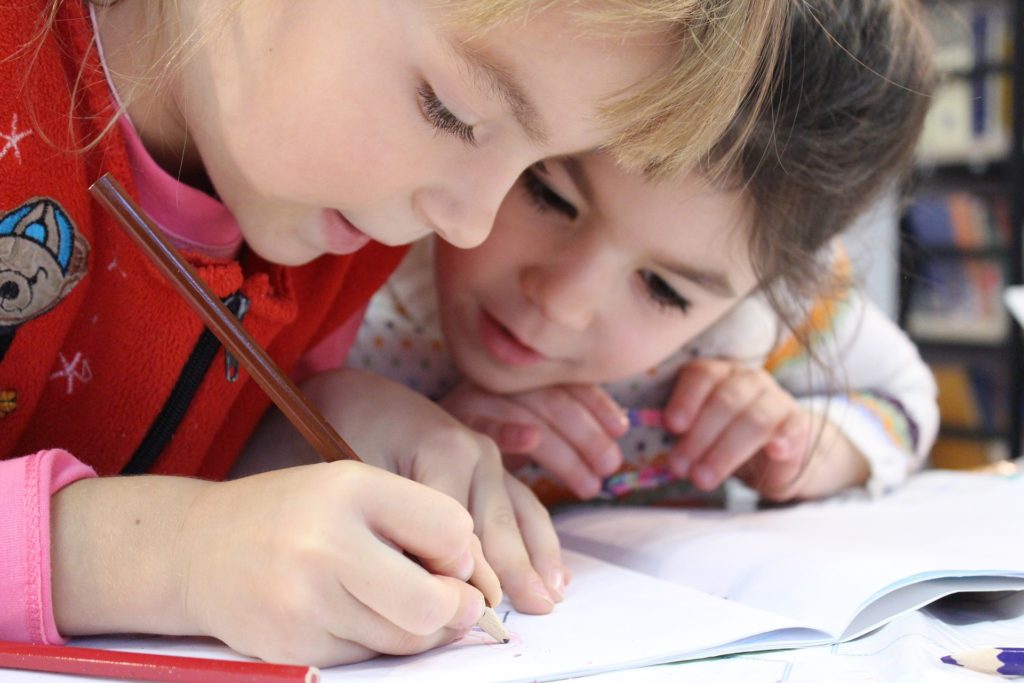
Originally posted on the Best Starts For Kids Blog
The COVID-19 pandemic added a lot of new words to our vocabulary. From social distancing to asymptomatic, Public Health actually compiled a glossary to help make sense of the many new words! When it comes to planning for school these days, here’s another new word – pods.
What is a pod?
With many schools opting for remote learning, pods are an agreement between families to have their kids come together in person to learn. Also known as “learning pods” or “pandemic pods,” these small groups of students will learn together in person. Depending on the grade level/age and needs, pods can operate with parental supervision, little to no supervision, or a tutor.
Learning pods can be helpful for families with working parents who are unable to be at home during the day with their school-age children. They also provide a way for children to get social interaction.
Some people may just be learning what a pod is. And others may already have strongly formed opinions about pods and how they are likely to intensify existing inequities. We know that not everyone has the same level of privilege and access to opportunities, including the resources to hire a personal tutor for their kids.
Grounded in equity
Best Starts grounds everything we do in our equity statement. There are no easy answers right now as parents wrestle with how to best support their kids and meet their family needs. Kids and families have different strengths and resources and also share some common needs like happiness, health, safety and opportunities to thrive! Families will prioritize different things to promote their children’s health, learning, social connection, and emotional well-being.
Our equity statement declares:
“Equity proactively builds strong foundations of agency, is vigilant for unintended consequences, and boldly aspires to be restorative”
Children, Youth and Young Adults Advisory Board Equity Statement
So whatever you decide as a parent and family, we encourage you to weigh potential unintended consequences of your choices, while also not becoming immobilized, either because of the responsibility of privilege or feeling a lack of options. COVID-19 has further reminded us that we are each at our healthiest when we all are working together to promote our collective well-being – this holds true for our children’s growth, development and learning. Everybody does better when truly everybody does better.
Considering a pod? Here’s what to keep in mind.
School is a lot more than academic learning. It is also a place where students access basic needs and gain social-emotional skills. You know your kids best, so as you think about your student’s well-being as a whole person, here are some things to consider:
What are some benefits and limitations of pods?
Some kids really thrive in group settings. Pods could be very helpful by encouraging peer support, motivation and staying engaged with learning. Perhaps your student will understand new concepts and do homework better with help from peers or other adults. Pods among families can serve as a place to check in with each other about the fundamental things that contribute to academic engagement, motivation, retention, and creativity.
Pod space could be therapeutic for peers to share reflections on their own and their friends’ mental health, particularly for Black, Indigenous and youth of color. Older youth don’t need to have action steps beyond just listening and hearing each other.
Some pod check in examples could include: “how are you feeling? “what is going well? “what is hard/worrying right now?” “did everyone have breakfast?” “does everyone have luch/snacks/dinner?” “are you staying home a lot and how is that going?”
On the other hand, a pod may not be helpful if the kids in the pod are more likely to distract one another or are competitive in unhealthy ways.
Safety and health best practices
- Keep groups small: If you’re making a “pod” with others, keep it as small as possible. 5 or fewer children is ideal and consistent with other Public Health guidance.
- Avoid mixing “pods”: It’s important to keep the same kids together each day and to avoid mixing groups. If someone becomes sick, it is easier to quarantine a small group of children when you know who has spent time together.
- Go outside: Be outdoors as much as possible. The fresh air provides better ventilation and lower risk for COVID-19 spread from person to person. When indoors, open windows for better air flow.
- Wear masks!: Children older than 2 years and all adults should wear masks, even though your children are in the same group each day. Many people can have COVID-19 and have no symptoms. Wearing masks helps protect families and child care providers.
- Keep distance as much as possible: We know it can be difficult for children to stay apart from others. Try to keep at least 6 feet (2 meters) of distance between children as much as possible. For example, mark areas on the rug with tape or use mats for children to sit apart for their online distance learning activities.
- Look for signs: Monitor symptoms of your child and ask other families to do the same.
- Wash your hands frequently and thoroughly – and try to keep them away from your face.
Additional considerations
Back to school this year is HARD and different and demands flexibility and creativity and grace like never before. Pod considerations should include how to approach connection, supervision and learning support.
- Determine whether the benefits outweigh the risks. Learning pods are not necessary for students to be successful and if being in one seems too risky or too stressful, then don’t do it.
- Have open conversations between students and parents. Does everyone agree on expectations from preventing illness to pod purpose Transparent communication is very important.
- Set shared goals & values for both learning and how to support social emotional well-being and learning. Sometimes it takes a few weeks to get into the groove. So balance both flexibility and patience.
- Schedule time for families to check in on progress. Be open to changing your approach as you learn what is working and what is not. Sometimes more frequent short check ins are more effective than long ones, sometimes long ones are more efficient for problem solving – do what works for your families and try out different things.
- Problem solve for your child(ren’s) specific strengths and challenges. For example, if your child is motivated to engage in class, but has a harder time completing home work independently – arrange some check in/support after school hours.
- Anticipate your existing strengths and struggles as a parent and problem solve those too! For example, if you tend to be highly structured, build in some spontaneity days throughout the quarter to keep up the innovation/creativity.
- There may be some benefit to virtual pods to supplement the school day activities for families that are not participating in person in pods. Consider a virtual only pod or a hybrid pod where your in person pod includes kid(s) who only join remotely. Virtual pod benefits may include: engagement/motivation, small group learning and support, and tailored attention.
- Engage with your PTA/PTSA to get creative about brainstorming ideas, linking students, and sharing particularly tutor/teacher/adult supervision time.
- Caregivers and students can reach out to teachers to partner on the best way to support engagement and learning.
- Consider partnering with families you may not see often otherwise. The school environment brings kids together who may not interact otherwise. You can approach your PTA for possible family connections.
Originally posted September 3rd, 2020


